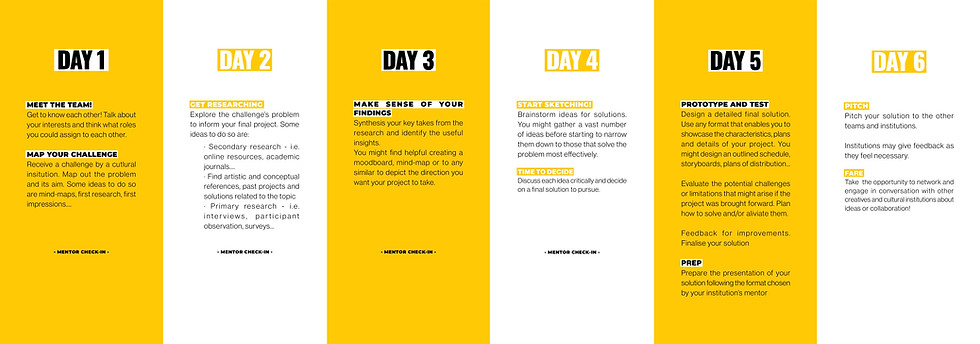RISING ARTS
CHALLENGE: “How might we better communicate the value of our intersectional community of young leaders to cultural institutions in Bristol?”
SOLUTION: A ‘Creative Leadership Challenge’, a 6-day sprint where institutions would present a brief to participants to observe how they perform and how they could relate to their institution - allowing them to show potential rather than drawing on experience.
I designed the 6-day sprint challenge guide and a Brief mock-up to visualise how the final product would look. We presented our solution to Risgin Arts in a comprehensive report where we adopted the tone of a consultant, which was again a useful practice to communicate effectively and assertively with clients - forwarding the importance of our key insights and the accuracy of the solution without wandering on unnecessary reflexive or side information.


PROCESS:
We approached the brief through Design Systems Thinking, first looking at the bigger picture of young creatives' struggles starting their careers. As we learned about the key influences and stakeholders involved, we started identifying areas with potential for change.
We started looking at the recruitment processes for creative roles, and the experience of young creatives with such job applications. We held interviews with both creative institutions and young creatives. One of the interviews I held one-to-one was with the Director of Spike Island, a recognised gallery in Bristol. This was immensely valuable in gaining skills not only in communicating professionally but also in conducting effective interviews. I semi-structured my interview to ensure all relevant points to the research were raised, whilst being mindful of the subjective and sensitive topic, thus avoiding directly asking about “value/discrimination towards young creatives” to avoid false statements or appearing to have an accusatory tone.
After the interviews, we shared our insights and analysed the pains and needs of our target audience. It seemed young creatives’ struggles to access leadership roles were based on a paradoxical requirement of previous experience - if they could not access creative roles, they could never gain validated experience. Hence, we transitioned into the Solution space of our design process and started brainstorming solutions for institutions to recognise potential rather than simply experience. After various iterations, we came up with the idea of the 'Creative Leadership Challenge'